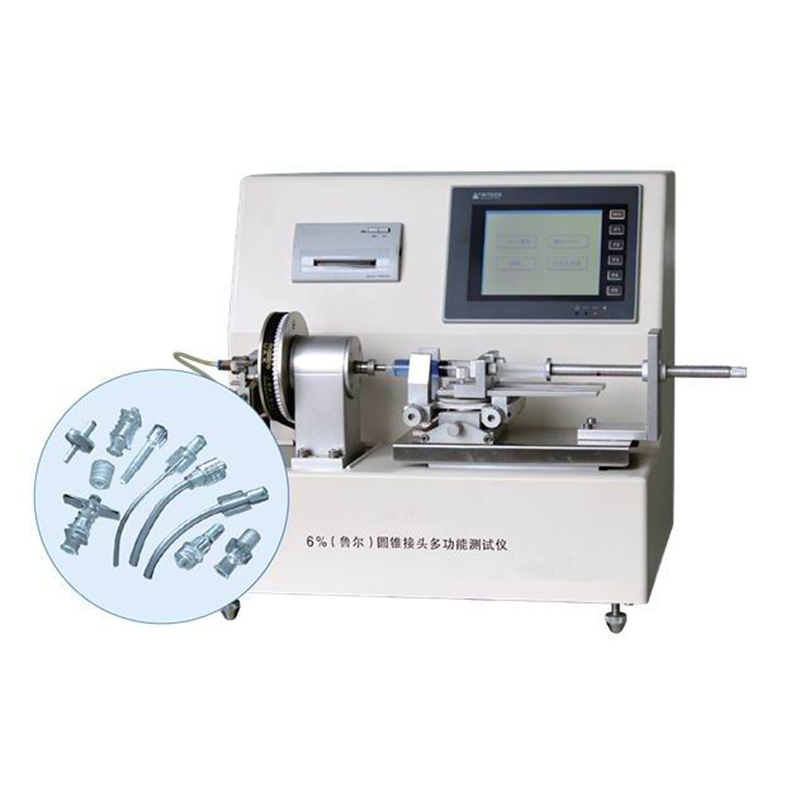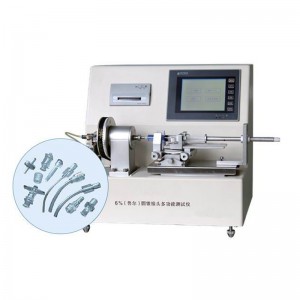ZD1962-T Conical Fittings with a 6% Luer Taper Multipurpose Tester
Axial force 20N~40N; errors: within ±0.2% of reading .
Hydraulic pressure: 300kpa~330kpa;errors: within ±0.2% of reading .
Torque: 0.02N.m ~0.16N.m; errors: within ±2.5%
A conical fittings with a 6% (Luer) taper multipurpose tester is a device used to test the compatibility and functionality of conical fittings with Luer taper. Luer taper is a standardized conical fitting system used in medical and laboratory applications for secure connections between various components, such as syringes, needles, and connectors.The multipurpose tester is designed to ensure that the conical fittings with a 6% (Luer) taper meet the required standards for compatibility and function. It typically consists of a testing fixture or holder that securely holds the conical fitting in place, and a mechanism to apply controlled pressure or simulate actual usage conditions on the fitting.During the testing process, the tester checks for the proper fit, tight seal, and absence of any leakages or loose connections between the conical fitting and the component being tested. It may have features such as pressure gauges, flow meters, or sensors to measure and analyze the performance of the fitting under varying conditions.The multipurpose tester can be used for a range of applications, including testing conical fittings on syringes, needles, infusion sets, stopcocks, and other medical devices that utilize Luer taper connections. By ensuring the proper compatibility and functionality of these fittings, the tester helps maintain the safety and effectiveness of medical procedures and laboratory operations.Manufacturers use the multipurpose tester to perform quality control checks on conical fittings during the production process. It helps identify any defects or irregularities in the fittings, allowing manufacturers to rectify or reject faulty products and ensure only high-quality fittings reach the market.Overall, the conical fittings with a 6% (Luer) taper multipurpose tester is an important tool in the quality assurance process for medical and laboratory equipment. It helps ensure secure and reliable connections between components, preventing any potential leaks or malfunctions that could compromise patient safety or experimental results.


